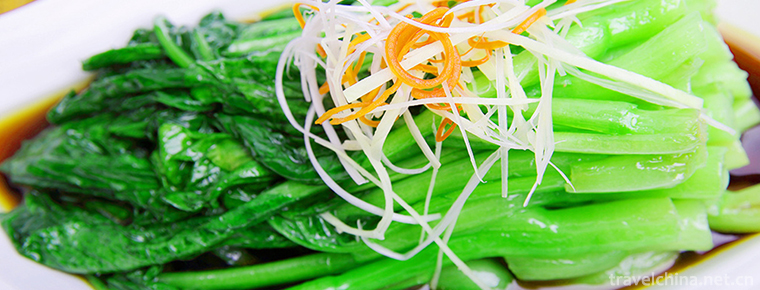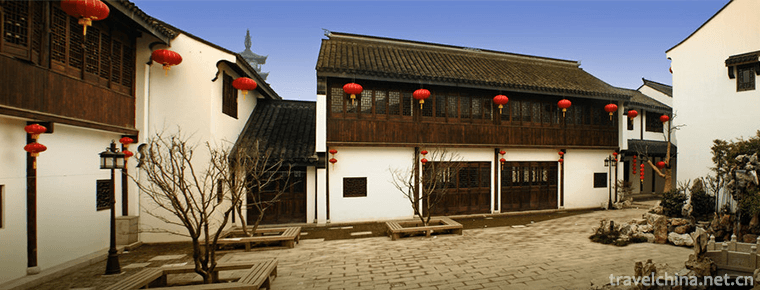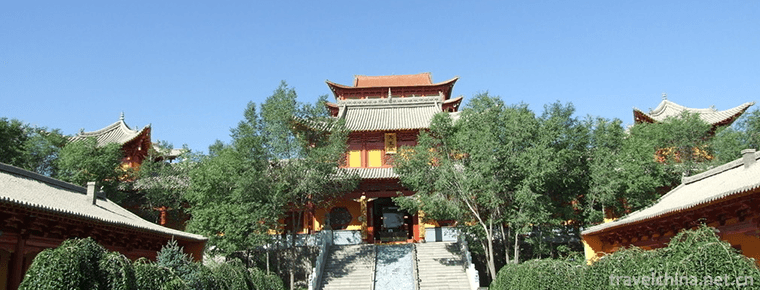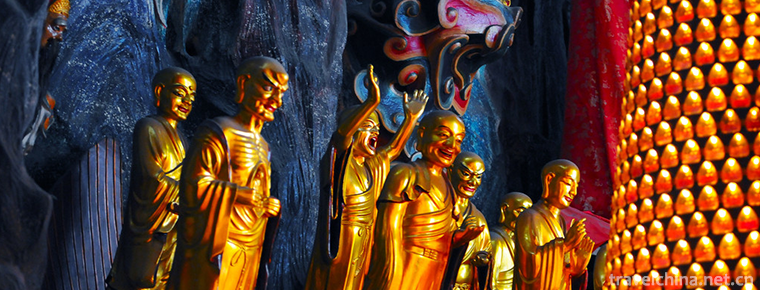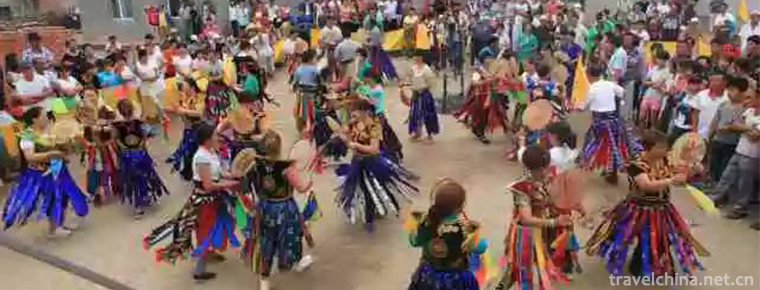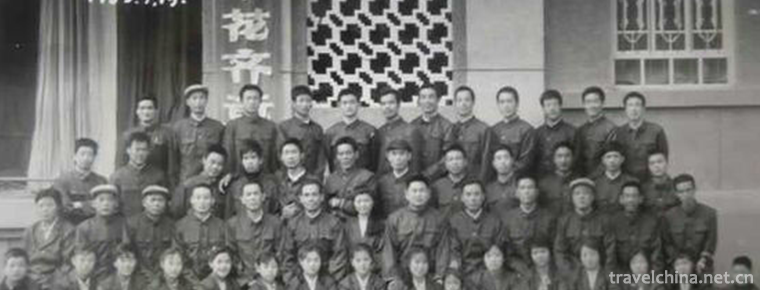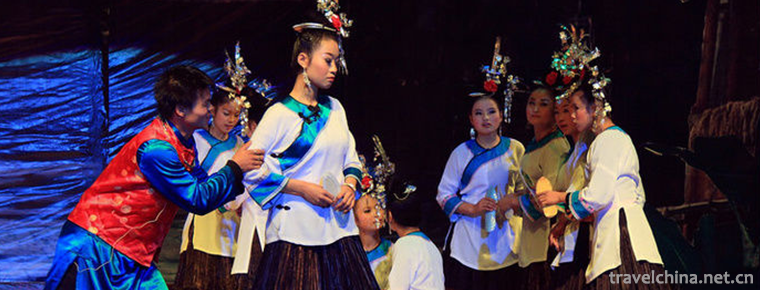Mudong Mountain Song
Mudong Mountain Song
Mudong folk song is a traditional folk song sung by the people of Mudong Town, Banan District, Chongqing City. Mudong folk song is a folk song sung by the people of Mudong Town, Banan District, Chongqing City. Its origin can be traced back to the "Bayu Song and Dance" of the ancient times, the "Lower Liba People" of the Warring States Period, the "Bazi Acura" of the Han Dynasty, and the "Bamboo Branches" of the Tang Dynasty, until the evolution of the Ming and Qing Dynasties.
Located in the east of Chongqing and on the South Bank of the Yangtze River, Mudong is a town in Banan District of Chongqing. In spring seedling transplanting season and golden autumn rice harvest season, on the vast fields of Mudong Town, Banan District, Chongqing, the people will sing Bayu folk songs while working.
On May 20, 2006, Mudong Folk Song was approved by the State Council to be included in the first batch of national intangible cultural heritage list.
historical origin
According to historical records, as early as the Warring States Period in BC, Questions to the King of Chu, written by King Chu Zong, contained Ba folk songs with Mudong folk songs as the main body. Mudong Town, located on the shore of the Golden Channel of the Yangtze River, is historically a land-and-water trade center with outstanding people. Mr. Yang Cangbai, Secretary-General of Sun Yat-sen's Revolutionary Grand Marshal Mansion of 1911, and Ding Cedar, the first female Ambassador of New China, were born here. In the long history, under the influence of Bayu culture and through the continuous creation, accumulation and refinement of local people in their work and life for thousands of years, Mudong folk song has formed a unique Bayu folk song culture, and has also fostered generation after generation of folk mountain singers.
In the old society before liberation, wooden cave folk songs could only be sung in the fields and hills and on the slopes. Farmers could only sing in their labors or after work to relieve the fatigue of labor and express the mood of workers. As a form of self-entertainment and self-pleasure, they were definitely unable to ascend the hall of elegance. After the founding of New China, especially since the reform and opening up of the country, the local government attaches great importance to the excavation, inheritance and development of Mudong folk songs as an important part of Bayu folk culture. The mountain singers are also respected and loved by the government and people.
artistic characteristics
content
Mudong folk songs have a long history. Along with the production and farming activities of the working people, they are accompanied by farming work and life by singing. There are grains (including high-pitched grains, flat-pitched grains, low-pitched grains, flower grains, etc.) which are called grains of crops or peasants. There are divine songs that invert normal phenomena in life and make fun of them; there are dial songs that are useful for singing in the form of songs; Unified rhythm, coordinated action and emotional labor chants (including boatmen's chant, engineering chant, handling chant, workshop chant, farming chant, etc.); folk songs sung in folk rituals and ceremonies (including solar terms, wedding song, funeral song, house repair song, birthday song, incense song, wine song, etc.); and various minor tunes and accompanied by dragon playing. Lion dancing, lotus flute dancing, boat rowing, dragon boat racing and other dance songs sung while dancing.
type
These kinds of folk songs also include a number of sub-categories. For example, ship song chant (mainly Chuanjiang chant) can be divided into upper water chant and lower water chant. Sheung Shui chant includes pole chant, plate radial chant, sailing chant, pull-up chant is divided into fiber chant, flat road chant, beach chant, near beach chant, chicken pecking rice chant and fibre harvesting chant; launching chant includes boat chant, plate radial chant; second-class raft chant, flat water chant, fast second-class raft chant chant, second-class raft chant chant, Yan-2-3 junction chant, beach chant chant chant, Beach wash chant chant chant, and beach chant chant. Grasp the trumpet, etc. For example, marriage songs include matchmaking songs, accompanying songs, face songs, combing songs, sitting songs and so on. The dressing song, sedan car song, sedan car song, road report song, car and horse song, solicitation song, etc. sung during the marriage; the chanting song, capping song, drinking song, congratulations song, thank-you song, banquet song, toast song, etc. sung before entering the cave; bedding song, furniture song and bedroom song, lotus Xiao song, farewell song after entering the cave room, etc.
In the past, besides singing folk songs in production, life and folk activities, Mudong people also held some traditional gatherings, such as Yangko Festival, Wedding Festival, Funeral Festival, Spring Festival Festival, Google Festival, Pickle Festival, Crab Festival, Fish Festival, Cattle Festival, Children's Festival, etc.
Representative Works
There are thousands of songs and ballads collected by the Cultural Department of Banan District. Among them, the popular ones are: the song of "beating clams" sung in the seedling season, the song of "beating valleys" sung in the autumn harvest season, the song of fishermen singing "fishing" and "crab song", the song of "racing on the slope" sung by cattle herdsmen, the song of "noisy houses" sung at weddings and so on. These folk songs have the characteristics of Bayu and local flavor, reflecting the diligence, wisdom, joy, fun and humour of the vast rural masses in labor, life and love. There are also various forms of singing: solo singing; multi-person chorus; and singer's whistle with index finger clipped to tongue, which matches another singer's folk song. When some seven-character lines of folk songs are sung to the second stanza, they usually raise their voice suddenly at the fourth word for several minutes, and then the song surpasses the wave before the final note is drawn.
Inheritance Significance
There are also many kinds of folk songs, such as labor chants, folk songs, performance songs and so on. There are thousands of tracks and many folk singers. In 1991, the first batch of 40 folk singers named by Chongqing, Mudong accounted for 37, of which 4 first-class singers who could sing more than 500 songs were all in Mudong. Mudong also compiled more than 300,000-word monograph "Mudong Mountain Song", which was published in December 2005. In 1990, Mudong area was named "the town of folk songs" by Chongqing. In 1999, Mudong folk songs were named "excellent folk art of Bayu and Chongqing".
Due to the change of production and lifestyle, most of the folk songs lost their foundation for development. The old generation of singers'aging and death, the inheritance of them broke down, and the Mudong folk songs are facing an endangered situation. Rescuing and protecting Mudong folk songs can not only enrich the art of folk songs in Bayu, but also promote the enrichment and development of Chinese folk songs.

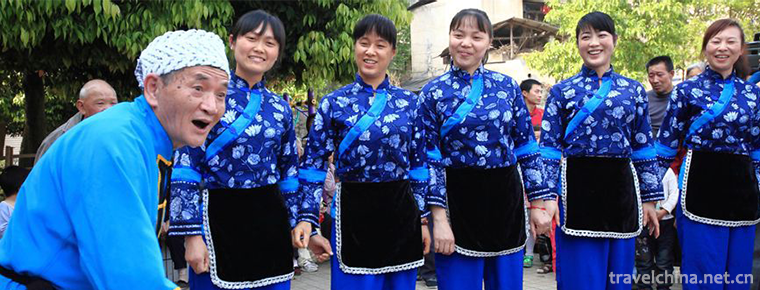
-
Boiled Chinese flowering cabbage
Boiled cabbage is a traditional dish in Guangdong province. It is a Cantonese cuisine. This dish is crisp and tender in quality, unique in flavor and rich in nutrition. .
Views: 136 Time 2018-11-02 -
Zhou Qiao old street
Zhouqiao Old Street is a national AAAA tourist attraction. The old street of Ximen in Jiading is located on the west side of Bole Square in downtown Jiading.
Views: 164 Time 2019-01-21 -
Qinghai Kekexili National Nature Reserve Hoh Xil
The Kekexili National Nature Reserve in Qinghai Province is located in the western part of Yushu Tibetan Autonomous Prefecture with a total area of 4.5 million hectares.
Views: 164 Time 2019-01-29 -
Shandan Great Buddhist Temple
Shandan Grand Buddha Temple is located at the foot of the mountain 5 kilometers west of Shandan County, Zhangye City, Gansu Province. The old name of "Tufo Temple" was built in the Northern.
Views: 160 Time 2019-02-08 -
Zhenjiang Jinshan Temple
Jinshan Temple was built in Jinshan Mountain on the South Bank of the Yangtze River in Zhenjiang City, Jiangsu Province, at the time of Emperor Ming of the Eastern Jin Dynasty.
Views: 230 Time 2019-03-18 -
Bo dance
Horqinbo dance, a primitive religious dance, is a form of Mongolian Bo (Shaman) "Xingbo" (Dancing God) and sacrifice. It is characterized by the combination of inspiration,.
Views: 371 Time 2019-04-04 -
Western Qin Opera
Western Qin opera, also known as "chaotic play", is popular in Haifeng, Lufeng, Chaoshan, southern Fujian and Taiwan. Western Qin Opera flowed into Hailufeng in the northwest of the Ming Dyn.
Views: 115 Time 2019-07-01 -
Yongnian Western Dialect
Yongnian Western Dialogue is an independent drama formed after Shangdang Bangzi of Shanxi was introduced into Yongnian. During the period of Xianfeng in Qing Dynasty, Shangdang Bangzi was introduced i.
Views: 158 Time 2019-07-14 -
Yongxiu Yaya Opera
Yongxiu Ya Opera originated in Wu Town, one of the four famous towns in Jiangxi Province. It was born in the late Ming Dynasty and Ganbei Bench Opera. Because all of its female characters were played .
Views: 192 Time 2019-07-14 -
Zhulang Niangmei
Zhulang Niangmei is a work of Dong Opera in Guizhou Province. At the end of the Qing Dynasty, Liang Yaoting and Liang Shaohua, Dong opera masters in Congjiang County, Guizhou Province, adapted Dong dr.
Views: 140 Time 2019-08-10 -
Beijing Institute of Fashion Technology
Beijing Garment College was founded in February 1959, formerly known as Beijing Textile Technology College. In July 1961, it was renamed Beijing Chemical Fiber Engineering College. It was a key univer.
Views: 332 Time 2019-09-06 -
Luzhou Medical and health
By the end of 2018, there were 46 primary health institutions and 39 other health institutions in the city, including 46 primary health institutions and 1 professional health institution. Among the hospitals, there are 97 general hospitals, 15 TCM hospitals and 35 specialized hospitals.
Views: 119 Time 2020-12-14
